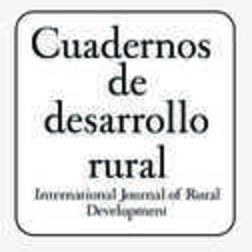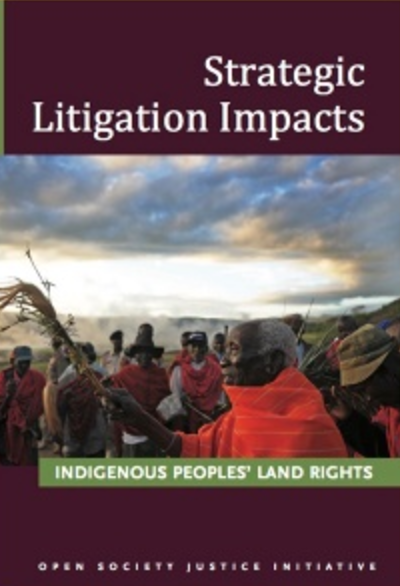Details
Location
Contributions
Displaying 881 - 890 of 2403Cuadernos de Desarrollo Rural
La revista tiene como tema general todos los aspectos que se tejen alrededor del desarrollo rural en el contexto colombiano e iberoamericano. Enfoca sus diferentes artículos en temas relacionados con políticas agrícolas, economía agraria, problemas rurales, gestión ambiental, innovación y cambio tecnológico y, en general, todos los aspectos que se tejen alrededor del desarrollo rural en el contexto colombiano e iberoamericano. Cuadernos de Desarrollo Rural es producida semestralmente por el Instituto de Estudios Rurales (IER) de la Facultad de Estudios Ambientales y Rurales.
Cotidiano Mujer
Cotidiano Mujer es un colectivo feminista creado en 1985. Desde entonces, Cotidiano Mujer ha trabajado acompañando el desarrollo de la agenda política y cultural de las mujeres uruguayas y latinoamericanas, construida en miles de encuentros, marchas, campañas, y debates.
Strategic Litigation Impacts: Indigenous Peoples' Land Rights
The world is increasingly encroaching on indigenous peoples’ traditional lands. Around the globe, indigenous communities are forced to cede ground to state development, corporate land grabs, rising sea levels, environmental degradation, and population growth. The right to land provides the basis for access to food, housing, and development. But for indigenous peoples, traditional lands are more than this; they represent essential ties to their ancestors, their culture, and their languages. Losing their land means losing their way of life.
Innovative Approach to Land Conflict Transformation: Lessons learned from the HAGL/indigenous communities’ mediation process in Ratanakiri, Cambodia
In the Mekong region, conflicts between local communities and large scale land concessions are widespread. They are often difficult to solve. In Cambodia, an innovative approach to conflict resolution was tested in a case involving a private company, Hoang Anh Gia Lai (HAGL), and several indigenous communities who lost some of their customary lands and forests when the company obtained a concession to grow rubber in the Province of Ratanakiri. The approach was developed by CSOs Equitable Cambodia (EC) and Inclusive Development International (IDI) with the support of QDF funding from MRLG.
Land Library Metadata Model
What is metadata?
Metadata ia set of data that describes and gives information about other data. It allows users as well as computers to understand what kind of information they can expect when they dig into your publication or dataset and the context of this information.
Meaningful Bibliographic Metadata (M2B) is intended to assist content providers in selecting appropriate metadata properties for the creation, management and exchange of meaningful bibliographic information in open repositories.
The Land Library follows the Meaningful Bibliographic Metadata with a few adjustments and additions to provide users even more information about the resources that exist in the Library. These adjustments and additions are of course not mandatory to follow, but we highly recommend it.
What is the Land Library's metadata model?
Below you can find the different metadata fields the Land Library's metada model contains (* means required):
- * Title (text - max: 255 characters)
- * Abstract / Description (Long Text)
- Authors / Editors / Contributors (people) [could be more than one]
- Corporate Authors / Editors / Contributors (organization) [could be more than one]
- * Publishers (organization) [could be more than one]
- ID/ISBN/ISSN (text - max: 255 characters)
- Pages (text - max 255 characters)
- Duration (text - max 255 characters) (ideally, in ISO 8601 date format)
- * Type of resource (ideally, from this closed list. If there are not from that list, a mapping process will be needed) [could be more than one]
- * Publication date (year, year and month... ideally, in ISO 8601 date format)
- * Language/s of the resource (ideally the ISO 639-1 code) [could be more than one]
- * Geographical focus (areas and countries related) (ideally, the ISO 3166-1 alpha-3 code for countries and UN M49 code for areas/regions) [could be more than one]
- * Related concepts / themes (ideally concepts and themes from the LandVoc. If there are not from that list, a mapping process will be needed) [could be strings or URIs] [could be more than one]
- Link to the online source (normally in the data provider partner's website)
- Link to the online document / file to upload (a link or a file)
- License (ideally from a closed list. If they are not from that list, a mapping process will be needed)
- Copyright details (like the organization / person that owns the copyright or a specific copyright statement).
- Image or thumbnail (a link or a file)
Example
These fields applied to an actual resource (in this case: "GLTN/UN-Habitat Youth Led Action Research on Land Commencement Workshop"):
- Title: GLTN/UN-Habitat Youth Led Action Research on Land Commencement Workshop
- Abstract / Description: "The land challenge is central to the broader youth dynamics of migration, employment, livelihoods and belonging. The more than 1.8 billion youth living worldwide represent not only a land challenge, but an untapped potential in moving the tenure security agenda forward. Recognizing this, the Global Land Tool Network has partnered with UN-Habitat to develop youth responsive land tools through..."
- Authors / Editors / Contributors: Kate Fairlie; Toril Iren Pedersen; Douglas Ragan; Priscilla Li Ying;
- Corporate authors / Editors / Contributors: Global Land Tool Network
- Publishers: Global Land Tool Network
- ID/ISBN/ISSN: GLTN/UN-Ha2014
- Pages: 35
- Type of resource: Reports & Research
- Publication date (month/year): 2014-01-17
- Language of the resource: en
- Geographical focus (areas and countries related): Global; Asia; BRA; KEN; NPL; YEM; ZWE.
- Related concepts and themes from the LandVoc: Land Stakeholders & Institutions; capacity building; land governance; land rights; research; youth; http://aims.fao.org/aos/agrovoc/c_8491
- Link to the online source: https://gltn.net/download/un-habitat-and-gltn-youth-led-action-research-on-land-commencement-workshop-report/
- Link to the online document: https://gltn.net/download/un-habitat-and-gltn-youth-led-action-research-on-land-commencement-workshop-report/?wpdmdl=7713
- License: All rights reserved
- Copyright details: Copyright © United Nations Human Settlements Programme (UN-Habitat), 2013
- Image or thumbnail: https://gltn.net/home/wp-content/uploads/2016/10/Yourh-wshp-report.jpg
Questions, doubts, comments?
If you have any additional questions or remarks about the Land Library's metadata model, please do not hesitate to get in touch with the Land Portal's Land Library team!
Zambia LII
An online legal database with laws and legislation from Zambia, part of the AfricaLII intitiative.
Association of Zambian Mineral Exploration Companies
AZMEC is the Association of Zambian Mineral Exploration Companies.
The aims and objectives of AZMEC are to provide a discussion forum and dedicated lobby group for mineral exploration companies and mining companies carrying out exploration as well as government representatives, NGO’s, service providers, academic institutions and other interested parties in Zambia with the view to contributing to the growth, promotion, and sustainable development of the sector in this country.
Government of Samoa
New Zealand occupied the German protectorate of Western Samoa at the outbreak of World War I in 1914. It continued to administer the islands as a mandate and then as a trust territory until 1962, when the islands became the first Polynesian nation to reestablish independence in the 20th century. The country dropped the "Western" from its name in 1997.
Samoa is a parliamentary republic.
Source: CIA World Factbook










